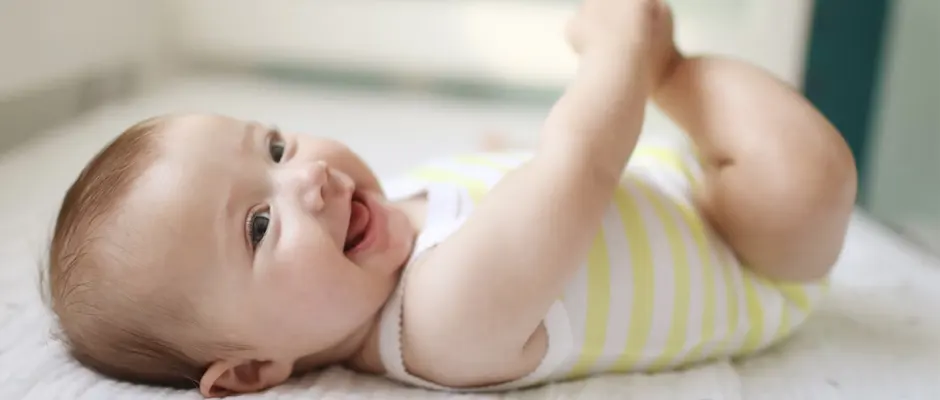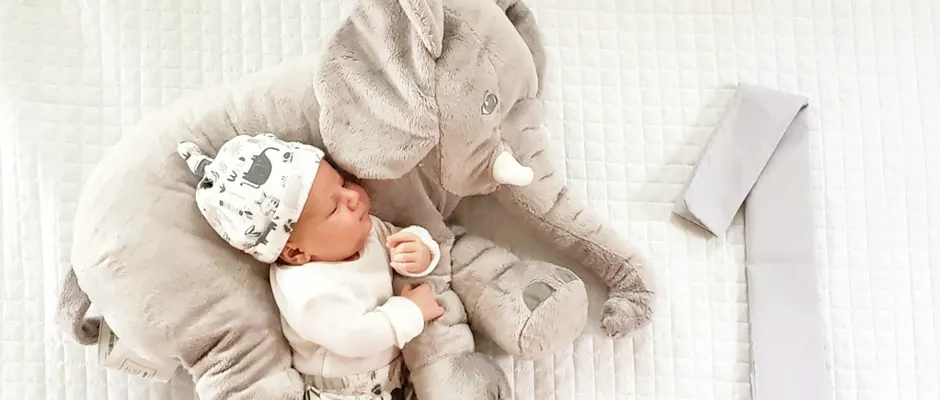The journey of parenthood is filled with magical moments: the first smile, the first time your baby rolls over, the first laugh that lights up the room. These are not just emotional highlights—they are essential baby milestones that reflect a child’s growth and development.
Tracking baby milestones helps parents and caregivers:
- Understand what’s typical at each stage.
- Recognize when their baby might need extra support.
- Celebrate progress in ways that strengthen bonding.
It’s important to remember that baby milestones are guidelines, not deadlines. Every baby grows at their own pace. Some may reach milestones earlier, while others take more time—and both can be perfectly normal.
What Are Baby Milestones?
Baby milestones are developmental achievements that mark a child’s physical, cognitive, emotional, and social growth. They can be grouped into four major categories:
Physical (Motor Skills)
Rolling, sitting, crawling, standing, and walking.
Cognitive (Thinking and Learning)
Recognizing faces, responding to names, problem-solving through play.
Social and Emotional
Smiling, bonding, responding to familiar voices.
Language and Communication
Cooing, babbling, first words, understanding instructions.
Milestones serve as checkpoints. Pediatricians often use them to ensure that baby milestones are being reached within typical time frames, while also acknowledging individual differences.

Baby Milestones: 0–3 Months
The first three months of life are all about adjustment—for both baby and parents. At this stage, baby milestones focus on sensory awareness, bonding, and basic motor skills.
Physical Milestones (0–3 Months)
- Reflexes dominate: grasping, rooting, and Moro reflexes are strong.
- Head movement: by 2 months, babies may briefly lift their heads during tummy time.
- Improved muscle tone: gradual control of arms and legs begins.
Cognitive Milestones (0–3 Months)
- Focus on faces: babies show preference for human faces.
- Tracking objects: following moving objects with eyes begins.
- Recognizing voices: familiar voices capture attention.
Social and Emotional Milestones (0–3 Months)
- First social smile: usually emerges around 6–8 weeks.
- Bonding signals: comforted by being held or soothed by parents.
Language and Communication Milestones (0–3 Months)
- Cooing sounds: vowel-like sounds begin around 2 months.
- Crying as communication: distinct cries for hunger, discomfort, or tiredness.
💡 Parent Tip: Encourage these baby milestones with tummy time, gentle talking, and plenty of skin-to-skin contact.

Baby Milestones: 4–6 Months
From 4 to 6 months, babies become more interactive. These baby milestones highlight growing independence and exploration.
Physical Milestones (4–6 Months)
- Rolling over: typically around 4–5 months.
- Sitting with support: by 6 months, babies may sit with assistance.
- Hand control: reaching and grasping objects intentionally.
Cognitive Milestones (4–6 Months)
- Object recognition: babies start to understand familiar toys.
- Cause and effect play: shaking a rattle to hear the sound.
- Anticipation: expecting routines like feeding or bedtime.
Social and Emotional Milestones (4–6 Months)
- Laughing and giggling: frequent and responsive to interactions.
- Recognizing caregivers: preference for parents or familiar people.
- Expressive emotions: showing excitement with kicks and arm movements.
Language and Communication Milestones (4–6 Months)
- Babbling begins: consonant sounds like “ba” or “da.”
- Responds to name: may turn head when called.
- Mimicking sounds: attempts to copy parent voices.
💡 Parent Tip: Foster these baby milestones with interactive play, reading aloud, and plenty of face-to-face time.
Real Parent Stories
Maya, mom in NYC: “When my son smiled for the first time at 7 weeks, I knew it was more than just gas—it was one of those unforgettable baby milestones.”
Daniel, dad in Los Angeles: “Rolling over at 5 months felt like a huge leap. It showed me how fast baby milestones happen once they start stacking up.”
Key Insights
- Baby milestones cover physical, cognitive, social, and language growth.
- Early milestones (0–3 months) focus on reflexes, bonding, and awareness.
- Between 4–6 months, babies gain independence through rolling, babbling, and laughter.
- Every child progresses at their own pace—comparison is less important than consistency.

Exploring the 7–12 Month Stage
Why the 7–12 Month Stage Matters
The second half of a baby’s first year is often the most exciting and dynamic. This period is filled with visible progress in movement, communication, and emotional connections. Parents often describe it as the time when baby milestones suddenly come one after another, making every day feel like a new adventure.
From crawling and standing to babbling “mama” or “dada,” the baby milestones between 7 and 12 months mark a transformation from helpless newborn to curious explorer. Let’s break down each stage.
Baby Milestones: 7–9 Months
By this age, babies are more mobile, interactive, and eager to explore their surroundings. Baby milestones in this phase focus heavily on movement, hand coordination, and communication.
Physical Milestones (7–9 Months)
- Sitting without support: by 8 months, many babies can sit steadily on their own.
- Crawling begins: some start traditional crawling, while others scoot or army crawl.
- Pulling up: holding onto furniture and testing standing positions.
- Improved grip: developing the “pincer grasp” to pick up small objects with thumb and forefinger.
Cognitive Milestones (7–9 Months)
- Object permanence: babies understand that objects still exist even when hidden (peek-a-boo becomes fascinating).
- Problem-solving play: banging, shaking, and exploring toys with intent.
- Memory development: recognizing familiar people and routines more strongly.
Social and Emotional Milestones (7–9 Months)
- Separation anxiety: babies may cry when parents leave the room.
- Stranger anxiety: cautious reactions to unfamiliar faces.
- Playful interaction: enjoying games like peek-a-boo and pat-a-cake.
Language and Communication Milestones (7–9 Months)
- Babbling expands: combining sounds like “mamama” and “dadada.”
- Tone recognition: responding differently to happy vs. stern voices.
- Simple understanding: may begin to recognize words like “no” or “bye-bye.”
💡 Parent Tip: Encourage these baby milestones by offering safe play spaces for crawling, engaging in interactive games, and narrating daily activities to enhance language learning.
Baby Milestones: 10–12 Months
This stage marks the transition toward toddlerhood. Babies gain more independence, attempt first steps, and begin communicating more clearly.
Physical Milestones (10–12 Months)
- Standing independently: many babies pull themselves up and stand briefly without support.
- Cruising: walking while holding onto furniture.
- First steps: some may take their first unassisted steps around 12 months.
- Fine motor skills: improved ability to pick up food and feed themselves.
Cognitive Milestones (10–12 Months)
- Imitation: copying gestures, sounds, and simple actions from adults.
- Cause-and-effect play: pushing buttons on toys or dropping objects for fun.
- Exploring boundaries: testing reactions from parents by doing “forbidden” actions.
Social and Emotional Milestones (10–12 Months)
- Attachment deepens: showing strong bonds with caregivers.
- Sharing smiles and gestures: offering toys, waving “bye-bye.”
- Assertiveness: displaying preferences (favorite toys, foods).
Language and Communication Milestones (10–12 Months)
- First words: many babies say “mama,” “dada,” or other simple words.
- Responding to requests: may follow simple instructions like “come here.”
- Increased babbling: experimenting with pitch and rhythm of speech.
💡 Parent Tip: Support these baby milestones by encouraging safe walking practice, reading daily, and giving babies opportunities to self-feed with finger foods.
🚩 Red Flags: When to Consult a Pediatrician
While every child develops at their own pace, some delays in baby milestones may signal the need for professional evaluation.
Possible Concerns at 7–9 Months
- Cannot sit with support.
- No attempt to bear weight on legs.
- Limited response to familiar voices.
Possible Concerns at 10–12 Months
- Does not crawl or attempt to move independently.
- Cannot sit without support by 12 months.
- No babbling or response to name.
- No interest in engaging with caregivers.
If parents notice any of these signs, it’s important to bring them up at regular pediatric checkups. Early intervention can make a significant difference.
Key Insights
- Baby milestones from 7–9 months focus on mobility, hand coordination, and early communication.
- From 10–12 months, milestones shift toward independence, walking, and first words.
- Separation and stranger anxiety are normal emotional developments in this stage.
- Red flags exist but should always be viewed within the context of each child’s unique pace.

The Second Year of Growth
Why the Second Year Is Transformative
The second year of life is when babies begin their transition into toddlerhood. During this period, baby milestones become more dramatic and noticeable: walking turns into running, babbling transforms into words, and simple play evolves into problem-solving and imaginative activities.
This stage is filled with excitement—and sometimes challenges—as independence grows. Parents often find themselves chasing after curious little explorers who are eager to test their limits.
Baby Milestones: 13–18 Months
Between 13 and 18 months, babies usually achieve huge leaps in movement and communication. These baby milestones reflect not only physical strength but also emotional and social growth.
Physical Milestones (13–18 Months)
- Walking independently: many babies begin walking around 13 months, though some may start earlier or later.
- Climbing: interest in stairs and furniture begins.
- Improved coordination: bending to pick up toys while standing.
- Early running: by 18 months, many toddlers can run, though still clumsy.
Cognitive Milestones (13–18 Months)
- Exploring cause and effect: pressing buttons, stacking blocks, and knocking things down.
- Problem-solving: figuring out simple puzzles or shape sorters.
- Imitation play: pretending to talk on the phone, stirring with a spoon.
Social and Emotional Milestones (13–18 Months)
- Separation anxiety decreases: babies feel more secure exploring.
- Showing affection: hugs, kisses, and waving become common.
- Temper tantrums: frustration at communication limits may appear.
Language and Communication Milestones (13–18 Months)
- First 5–20 words: simple words like “mama,” “dada,” “ball,” or “dog.”
- Understanding instructions: following simple commands like “bring me the toy.”
- Pointing to communicate: using gestures to express needs.
💡 Parent Tip: Support these baby milestones by offering safe climbing opportunities, reading daily, and encouraging simple conversations.
Baby Milestones: 19–24 Months
From 19 to 24 months, toddlers show significant leaps in independence. They are eager to explore their environment, test their abilities, and assert their personalities.
Physical Milestones (19–24 Months)
- Running improves: toddlers run with better balance.
- Climbing confidence: easily go up stairs with assistance.
- Kicking and throwing balls: gross motor skills expand.
- Improved fine motor skills: stacking blocks, turning pages, scribbling with crayons.
Cognitive Milestones (19–24 Months)
- Object categorization: recognizing shapes, colors, and animals.
- Problem-solving: completing more complex puzzles.
- Pretend play: using toys creatively (feeding dolls, pretending to cook).
Social and Emotional Milestones (19–24 Months)
- Parallel play: playing alongside other toddlers without fully interacting.
- Independence and defiance: frequent use of “no” as toddlers test boundaries.
- Stronger emotions: expressing frustration, excitement, and affection more clearly.
Language and Communication Milestones (19–24 Months)
- Vocabulary explosion: from 20 words to over 100 by age 2.
- Two-word sentences: “want juice,” “go park.”
- Understanding questions: responding to “where” or “what” questions.
💡 Parent Tip: Expand your toddler’s vocabulary by naming objects, reading interactive books, and describing daily routines.
🚩 Red Flags in the Second Year
Some delays in baby milestones may indicate developmental concerns. Parents should consult a pediatrician if:
- By 15 months: baby does not walk or bear weight on legs.
- By 18 months: no meaningful words are spoken.
- By 24 months: baby cannot follow simple instructions or shows no interest in social interaction.
Early support and therapies can make a big difference in developmental progress.
Key Insights
- Between 13–18 months, baby milestones focus on walking, first words, and imitation play.
- Between 19–24 months, toddlers develop running, pretend play, and two-word sentences.
- Temper tantrums and independence struggles are normal signs of emotional development.
- Red flags exist but should always be assessed in context—every child’s journey is unique.
From Toddlers to Confident Explorers
Baby Milestones: 2–3 Years
By the time a child enters their second and third year, the pace of development accelerates even further. The baby milestones at this stage cover complex movement, advanced language skills, social interaction, and emotional regulation.
Physical Milestones (2–3 Years)
- Running with coordination: toddlers move faster and fall less often.
- Jumping and climbing: managing playground equipment with growing confidence.
- Ball skills: throwing, catching, and kicking improve.
- Fine motor skills: using spoons, building towers, turning doorknobs, beginning to draw circles.
Cognitive Milestones (2–3 Years)
- Problem-solving growth: completing puzzles, understanding sequences.
- Symbolic play: pretending a block is a car or a stick is a magic wand.
- Early memory: recalling recent events, recognizing routines.
- Following two-step directions: e.g., “Pick up the toy and put it in the box.”
Social and Emotional Milestones (2–3 Years)
- Parallel to interactive play: moving from playing beside others to playing with them.
- Developing empathy: offering comfort to upset peers.
- Stronger independence: insisting on choosing clothes or feeding themselves.
- Big emotions: tantrums still common as toddlers learn self-control.
Language and Communication Milestones (2–3 Years)
- Vocabulary growth: 200–500 words by age 3.
- Two- and three-word sentences: “I want cookie,” “Go park now.”
- Question phase: frequent use of “what,” “why,” and “where.”
- Pronouns and plurals: starting to use words like “me,” “you,” “cats,” “cars.”
💡 Parent Tip: Encourage these baby milestones by engaging in imaginative play, asking open-ended questions, and giving toddlers choices in daily routines.
🚩 Red Flags for Ages 2–3
Parents should seek guidance if their child:
- Cannot walk steadily by 2 years.
- Has fewer than 50 words by 2 years, or no two-word phrases by 3 years.
- Shows no interest in playing with others.
- Does not imitate actions or gestures.
- Appears unable to follow simple instructions.
Early evaluation by pediatricians or developmental specialists ensures that support can be provided if needed.
Expert Advice on Baby Milestones
Professionals emphasize that baby milestones are best seen as ranges, not fixed deadlines.
Dr. Anna Reynolds, Pediatrician (NYC):
“Parents often worry if their child is a little behind on a milestone. What matters most is steady progress and engagement with their environment.”
Dr. Michael Carter, Child Development Specialist (LA):
“Play is not just fun—it’s the foundation of learning. Through play, toddlers achieve many of their most important baby milestones.”
Dr. Sofia Martinez, Speech Therapist (Chicago):
“If you’re concerned about language, talk to your pediatrician. Early speech support makes a huge difference and removes unnecessary stress for families.”
Frequently Asked Questions (FAQs)
1. What are the most important baby milestones?
Physical (walking, sitting), language (first words), cognitive (object permanence), and social (smiling, bonding).
2. When should I be concerned if my baby hasn’t met a milestone?
If progress stalls or your baby shows multiple delays, consult a pediatrician.
3. Are baby milestones the same for every child?
No. Every child has their own rhythm. Milestones are guidelines, not strict deadlines.
4. How can I encourage baby milestones?
Through play, reading, tummy time, responsive communication, and safe exploration.
5. Do premature babies reach milestones later?
Yes. Milestones are often measured using “adjusted age” for preemies.
The first three years of life are filled with rapid, extraordinary development. From the first smile to the first sentence, baby milestones offer a roadmap for understanding how children grow physically, emotionally, and cognitively.
Yet the most important takeaway is this: baby milestones are guidelines, not competitions. Each child’s journey is unique, shaped by genetics, environment, and love. Parents should celebrate every achievement—big or small—while offering patience and support through challenges.
By focusing on bonding, play, safe environments, and encouragement, families provide the foundation for healthy growth. And as experts remind us, the best measure of progress is steady engagement, curiosity, and joy.
So whether your child takes their first steps at 12 months or 16, or says their first words at 10 months or 20, remember: every baby has their own timeline, and every milestone is worth celebrating.
👉 Want more newborn essentials guides? Visit our InfantiMundo homepage and follow us on Instagram 🌸👶.



